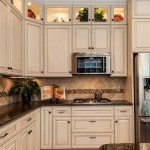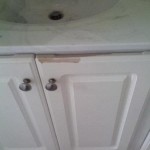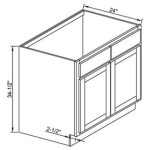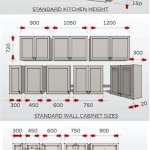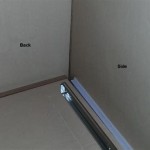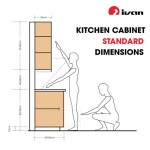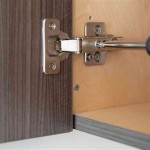Kitchen Cabinet Kickboards: A Comprehensive Guide
Kitchen cabinet kickboards, often referred to as plinth boards or baseboards, serve a crucial role in enhancing the aesthetics and functionality of your kitchen. They are the vertical panels that extend from the bottom of your kitchen cabinets to the floor, providing a seamless transition and concealing potential gaps and imperfections.
Kickboards are more than just decorative elements; they play a vital role in protecting your kitchen environment and ensuring a smooth workflow. This article delves into the diverse aspects of kitchen cabinet kickboards, exploring their benefits, considerations, installation process, and maintenance tips to help you make informed decisions for your kitchen renovation project.
Benefits of Kitchen Cabinet Kickboards
Installing kickboards in your kitchen offers a range of advantages that contribute to a more appealing and functional space. Here are some key benefits:
1. Enhanced Aesthetics and Visual Appeal
Kickboards create a clean and polished look by concealing the gap between the cabinets and the floor, eliminating unsightly clutter and dust accumulation. The uniformity they provide adds a cohesive and sophisticated aesthetic to your kitchen design.
2. Improved Durability and Protection
Kickboards act as a protective barrier against spills, splashes, and everyday wear and tear that can occur in a busy kitchen environment. They shield your cabinets from potential damage, extending their lifespan and preserving their appearance.
3. Enhanced Functionality and Cleaning
Kickboards create a smooth and easy-to-clean surface, eliminating hard-to-reach areas beneath the cabinets. This makes mopping and sweeping the floor a breeze, simplifying your kitchen maintenance routine.
4. Increased Storage and Organization
Kickboards can be designed to incorporate functional elements, such as drawers or shelves, providing additional storage space for kitchen essentials. This helps maximize your kitchen's efficiency and organization.
Choosing the Right Kickboards
When selecting kickboards for your kitchen, several factors need careful consideration to ensure they complement your existing cabinetry and meet your specific requirements.
1. Material Considerations
Kickboards are typically made from materials that are durable, moisture-resistant, and easy to maintain. Common options include:
- Wood: Offers a classic and elegant look, providing a warm and traditional feel. Choose from various wood species to match your cabinetry and desired style.
- Laminate: A cost-effective and durable option, available in a wide array of colors and patterns to complement your kitchen design.
- Metal: Offers a modern and industrial aesthetic, providing a robust and durable solution, particularly for high-traffic areas.
- Acrylic: A high-gloss material that adds a sleek and contemporary touch, enhancing the overall visual impact of your kitchen.
2. Style and Design
Kickboards are available in various styles and designs, allowing you to create a cohesive look that complements your kitchen cabinetry:
- Traditional: Opt for ornate moldings, intricate carvings, and classic wood finishes to create a timeless and elegant ambiance.
- Modern: Choose sleek and minimalist designs with clean lines and simple profiles to create a contemporary and sophisticated look.
- Rustic: Embrace natural wood textures, distressed finishes, and rustic accents to create a warm and inviting atmosphere.
3. Color and Finish
The color and finish of your kickboards should complement the overall color scheme of your kitchen and match your cabinetry. Consider the existing colors of your walls, backsplash, countertops, and appliances when making your selection.
Installation Process
Installing kitchen cabinet kickboards is a relatively straightforward process that can be done by a homeowner with basic DIY skills. Here's a general overview of the steps involved:
1. Preparation
Before installation, ensure the floor is level and clean. Measure the height of your cabinets and determine the desired length of the kickboards. Cut the kickboards to size using a saw or a miter saw for precise angles.
2. Attachment
Kickboards can be attached using various methods, including:
- Screws: Screw the kickboards directly to the cabinet base using countersinking screws.
- Adhesive: Apply a strong construction adhesive to the back of the kickboards and press them firmly against the cabinet base.
- Fasteners: Use specialized fasteners designed for attaching kickboards, ensuring a secure and stable installation.
3. Finishing
After installation, finish the kickboards with a sealant or paint to protect them from moisture and enhance their durability. Choose a sealant or paint that complements your cabinetry and overall kitchen décor.
Maintenance Tips
Maintaining your kitchen cabinet kickboards is essential for preserving their appearance and functionality. Follow these simple tips for optimal care:
- Regular Cleaning: Wipe down the kickboards with a damp cloth and mild soap solution to remove dirt and grime.
- Avoid Harsh Chemicals: Refrain from using abrasive cleaners or harsh chemicals that can damage the finish of the kickboards.
- Protect from Moisture: Ensure proper ventilation in your kitchen to prevent moisture buildup that can lead to warping or damage.
- Repair Minor Damage: Address any minor scratches or dents promptly to prevent further deterioration.

Kickboards Old Or New School Mdc Furniture Design

Bespoke Plinth Faktum Ltd

Kick Off How To Make The Most Of Kitchen Kickboards Houzz

Not All Kickboards Are Equal Rod S Kitchens

Le Coop De Pigeon Delicate Kickboards Black Kitchens Bathrooms

Kitchen Unit Cabinet Plinth Kickboard Gloss Matt White Black Cream Oak Beech

How To Make The Most Of Your Kitchen Kickboards Houzz

Alto Kitchen Kickboard System Korner

N Standard Kitchen Dimensions Renomart

Kitchen Storage Tips And Tricks
Related Posts

